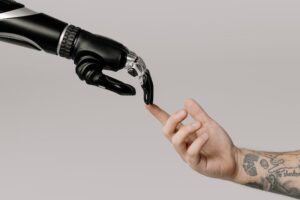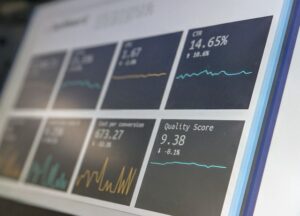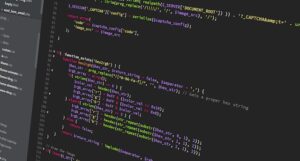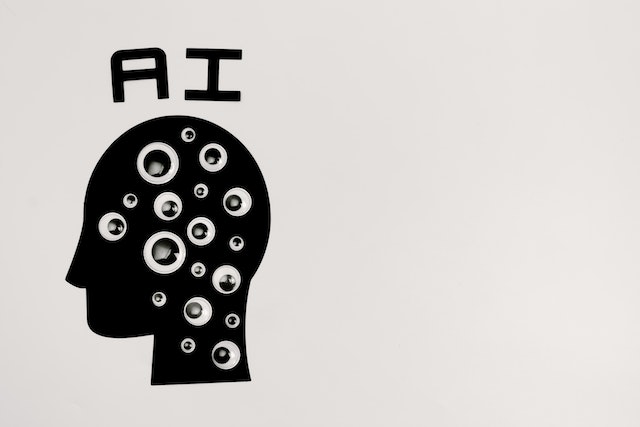Introduction
Today’s technologies are changing almost every industry in the world. One of the latest technological advancements that is being used in industries is artificial intelligence. This technology has been making incredible progress over the past several years. Neural networks are one of the most widely used technologies that are powered by AI.
Further, These networks have become increasingly efficient and reliable. In fact, this technology is already being used in different areas of industry. Neural networks are machine learning models that are used to process large amounts of data.
Moreover, They are also known as artificial neural networks. In this article, we will discuss the role of neural networks in AI applications and their limitations. In this article, we are going to talk about some of the limitations of neural networks.

The Role of Neural Networks in AI Applications
Neural networks are also known as artificial neural networks or multilayer perceptrons. They are made up of interconnected nodes that form layers, each of which learns from the one below it.
Additionally, They are a subset of a broader category called machine learning algorithms, which is a class of techniques that enables computers to learn from and make predictions based on existing data sets.
Further, These methods have become an increasingly common part of AI, which can be defined as a combination of computing and a broad range of machine learning techniques. Neural networks are commonly used in image classification, which is the automated identification of objects in an image.
Image Recognition
Image recognition systems use neural networks to recognize objects. Neural networks are similar to the human brain. They consist of layers of interconnected neurons. They are usually trained on huge amounts of data in order to classify new data and learn how to correctly recognize objects.
Additionally, They use artificial intelligence to learn from the data. There are two main types of neural networks: feedforward and recurrent. Feedforward networks are generally simpler and easier to train. Recurrent networks are able to capture the sequential nature of data. In image recognition, the neural network is trained on a large dataset of images.
During training, the neural network learns to recognize the characteristics that distinguish one object from another. Once the neural network is trained, it can accurately recognize and classify new images.

Speech Recognition
Speech recognition is the process of transforming the sound waves produced by a person into words. Speech recognition software can be used by users to dictate text or to interact with a computer in natural language mode, rather than by using a keyboard.
Further, The technology works by analyzing the human voice and breaking it down into individual sounds, such as sibilants (the hissing, whistling, and clicking sounds at the end of words).
However, There are various techniques that can be used to perform this task, including acoustic modeling, hidden Markov models, connectionist models, and artificial neural networks. Neural networks are very useful because they can process huge amounts of data in real time and can perform tasks that require significant computing power.

Natural Language Processing
Natural language processing (NLP) is the process of identifying the linguistic units (words and phrases) in a text, understanding their semantic content, and representing them in computer-readable form.
Importantly, Natural language processing is one of the most challenging problems in artificial intelligence. One major problem that people have with NLP is that it requires an immense amount of data to train the neural network. Another problem with NLP is that it requires a very large and highly accurate dataset.
However, Some companies make up huge datasets by creating them using a method called crowdsourcing. The quality of this data varies widely, and the dataset is only useful for training NLP models, not for general use. There are two main types of NLP: supervised learning and unsupervised learning.
Fraud Detection
Fraud detection refers to the process of identifying and preventing fraudulent activities in various industries, including finance, healthcare, and e-commerce. Fraudulent activities can range from credit card fraud to identity theft, and they can cause significant financial losses for individuals and organizations.
Further, One of the primary tools used for fraud detection is machine learning, specifically neural networks. Neural networks can analyze large datasets of transactions and identify patterns that may indicate fraudulent activity. These patterns can include unusual transaction amounts, irregular transaction times, or multiple transactions from the same IP address.
Moreover, Neural networks are trained on historical data, which helps them learn to identify fraudulent behavior more accurately. They can also be programmed to adapt to new types of fraud, making them a valuable tool for fraud detection in industries that are constantly evolving.

Predictive Analytics
The use of neural networks in predictive analytics has been growing over the past decade. Predictive analytics involves making predictions based on historical data that are then used to make informed decisions. It’s really good to know what will happen in the future based on what has already happened.
Further, It’s also helpful to know what to do if something does happen in the future. A common example would be investing money in a company. Knowing whether or not the investment will be profitable is very important. This is why predictive analytics can be useful for businesses.
Importantly, It helps predict what’s going to happen, and it can help companies make more informed business decisions. There are several ways to make predictions with a neural network.

The Limitations of Neural Networks
Despite their effectiveness, neural networks have some limitations that must be considered.
Data Dependence
When we talk about data dependence, we mean that the performance of a neural network depends on the amount of data it has. The quality of the data is important, as well. Good data will help a neural network perform better. This is because it will be easier to learn with high-quality data.
Further, When a neural network has insufficient training data, it can perform badly. This can happen when the input data is too small or when the model needs to be retrained. In both cases, the neural network will be at a disadvantage.
Therefore, it is important to collect lots of data before using a neural network. We can take advantage of many methods of collecting data for this purpose. For example, we can analyze images, collect user-generated data, or create simulations that can mimic real-world conditions. These methods will be helpful in collecting sufficient training data.

Limited Interpretability
Neural networks are often described as “black boxes” because it is difficult to understand how they arrive at their predictions or decisions. This can be a limitation in applications where it is important to understand the reasoning behind a decision, such as in legal or ethical contexts.
In addition to reasons, There are two main reasons why this is a problem. First, most people cannot easily explain how neural networks work. Secondly, most people cannot fully understand how neural networks make their decisions or predictions. It is a common misconception that neural networks are “black boxes.”
However, they are more like a computer program than like a black box. Most of the time, they will make the same decision every time they are asked the same question. A neural network that predicts the stock market will generally predict the same outcome every time it is given the same data.

Overfitting
A neural network can overfit if it becomes too specialized to the training data. This happens when the weights in the network are too dependent on the training data. This can happen when a neural network has too much training data and uses too many layers in order to increase its accuracy.
Further, It also can happen if a neural network is trained with data that does not represent the data that will be used later. Overfitting can also happen if a neural network learns to identify features that are not present in the training data.
For example, if a neural network learns to identify a particular type of hand-written character in the training data but sees a similar character in the test data, it may decide that this is an unusual character that it should recognize as well.
Conclusion
Neural networks are used to perform a wide range of functions. Some of the applications of neural networks include speech recognition, handwriting recognition, machine translation, and so forth. Neural networks can be trained to learn about the concepts and processes used to solve a particular problem. They can also be used to process data sets that contain information about certain patterns.
However, Neural networks can learn from experience as well. They can be taught about patterns that can be found in the data. Neural networks can also be trained to solve various problems using a learning algorithm.



